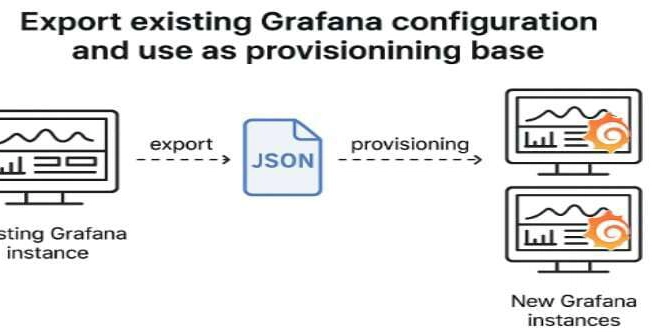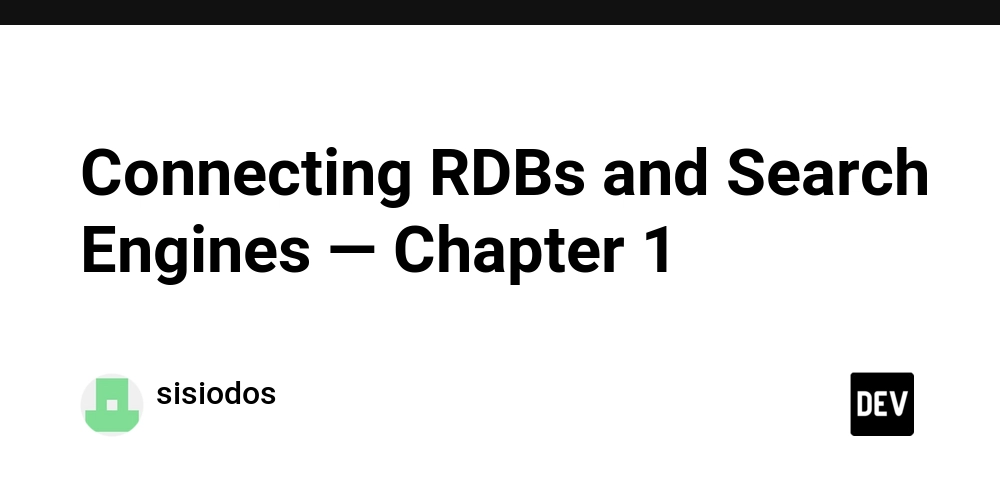Why I Stopped Doing Everything Manually in DevOps
There was a time when I believed manual work was the hallmark of a diligent engineer. I’d SSH into servers one by one, typing the same commands repeatedly: sudo apt update && sudo apt install nginx At first, it felt productive, like I was "in control." But over time, the cracks began to show. I was spending hours on tasks that should have been trivial. Typos crept in, deployments became inconsistent, and solving the same problems over and over left me exhausted. It wasn’t progress, it was stagnation. The Break Point Manual processes are deceptively risky. A misplaced command, a forgotten step, or a server accidentally overlooked could lead to downtime or security gaps. I realized I wasn’t just wasting time; I was introducing unnecessary human error into systems that demanded precision. The Automation Everything changed when I discovered automation tools like Ansible. Instead of manually configuring servers, I wrote a single playbook: - name: Install and configure Nginx hosts: webservers tasks: - apt: name: nginx state: present update_cache: yes Suddenly, What took hours was reduced to minutes. Servers were provisioned identically every time. Updates rolled out uniformly. Best of all, I could step back and focus on higher-value work. Three Shifts in My Engineering Mindset This experience reshaped how I approach problems: Automation First If a task is repetitive, it’s a candidate for automation. Whether it’s server setup, CI/CD pipelines, or monitoring, scripting eliminates drudgery and ensures consistency. Minimize Manual Intervention Manual work should be the exception, not the rule. Tools like Terraform, Kubernetes, and even simple shell scripts reduce the “human touch” to critical decision points, not routine execution. Design for Scale and Resilience Automated systems are easier to scale and audit. Need to deploy to 100 servers? A playbook handles it. Troubleshooting? Logs and version-controlled scripts provide clarity. A Question to always Ask Yourself If you’re still executing manual tasks in your DevOps or cloud workflows, pause and ask: “Can this be automated?” Start small—automate one script, one deployment, one backup process. The compounding savings in time, stress, and reliability will surprise you. Finally Automation isn’t about replacing human ingenuity, it’s about freeing it. By letting machines handle repetition, we gain space to solve harder problems, innovate, and build systems that last. To those on a similar journey: How has automation changed your workflow? Let’s share stories and learn from each other. The best engineering happens when we step back, think critically, and let automation do the heavy lifting. What’s your automation story? Share your experiences below. Check-Out this E-book. 7,000+ DevOps Interview Questions: Master Cloud, Kubernetes, and CI/CD Prepare for your dream DevOps role with this question bank! Whether you're just starting out or are an experienced professional, this guide offers over 7,000 expert-curated questions covering: Cloud Platforms: AWS, Azure, and GCP Kubernetes & Docker: From basics to advanced orchestration CI/CD Pipelines: Questions on Jenkins, GitLab, and Azure DevOps Infrastructure as Code (IaC): Terraform, Ansible, and more Monitoring & Logging: Prometheus, Grafana, and real-world scenarios This book doesn’t waste time on unnecessary theory. Instead, it focuses on real-world interview questions to help you prepare smarter and faster.What You’ll Get:✔ Over 7,000 focused questions to prepare for DevOps roles✔ Topics ranging from Linux commands to advanced CI/CD setups✔ Real-world examples and hands-on scenarios for better learning✔ Immediate access to a digital downloadWho Is This For? Job Seekers: Preparing for DevOps, cloud, or Kubernetes interviews Students: Learning Cloud, CI/CD, and automation Professionals: Upgrading skills or preparing for certifications Why Choose This Book?✔ Comprehensive coverage of DevOps essentials✔ Simple, clear, and easy to follow✔ Designed to save you time and focus on what mattersYour next job or promotion starts with the right preparation. Let this guide take you there!Table of Contents1. Introduction to DevOps 172. Interview Question Related to Networking in DevOps 19Beginner Level Networking Questions 20Intermediate Level Networking Questions 24Advanced Level Networking Questions 28Advanced Pro-Level Networking Questions 32Pro-Level Advanced Networking Questions 383. Interview Question Related to Operating System: Linux command 46Beginner Level Linux Command Questions: 46Intermediate Level Linux Command Questions: 51Advanced Level Linux Command Questions: 55Pro-Level Advanced Linux Command Questions: 594. Interview Question Relat

There was a time when I believed manual work was the hallmark of a diligent engineer.
I’d SSH into servers one by one, typing the same commands repeatedly:
sudo apt update && sudo apt install nginx
At first, it felt productive, like I was "in control." But over time, the cracks began to show. I was spending hours on tasks that should have been trivial.
Typos crept in, deployments became inconsistent, and solving the same problems over and over left me exhausted. It wasn’t progress, it was stagnation.
The Break Point
Manual processes are deceptively risky.
A misplaced command, a forgotten step, or a server accidentally overlooked could lead to downtime or security gaps.
I realized I wasn’t just wasting time;
I was introducing unnecessary human error into systems that demanded precision.
The Automation
Everything changed when I discovered automation tools like Ansible. Instead of manually configuring servers, I wrote a single playbook:
- name: Install and configure Nginx
hosts: webservers
tasks:
- apt:
name: nginx
state: present
update_cache: yes
Suddenly,
What took hours was reduced to minutes. Servers were provisioned identically every time. Updates rolled out uniformly.
Best of all, I could step back and focus on higher-value work.
Three Shifts in My Engineering Mindset
This experience reshaped how I approach problems:
Automation First
If a task is repetitive, it’s a candidate for automation. Whether it’s server setup, CI/CD pipelines, or monitoring, scripting eliminates drudgery and ensures consistency.Minimize Manual Intervention
Manual work should be the exception, not the rule. Tools like Terraform, Kubernetes, and even simple shell scripts reduce the “human touch” to critical decision points, not routine execution.Design for Scale and Resilience
Automated systems are easier to scale and audit. Need to deploy to 100 servers? A playbook handles it. Troubleshooting? Logs and version-controlled scripts provide clarity.
A Question to always Ask Yourself
If you’re still executing manual tasks in your DevOps or cloud workflows, pause and ask: “Can this be automated?” Start small—automate one script, one deployment, one backup process. The compounding savings in time, stress, and reliability will surprise you.
Finally
Automation isn’t about replacing human ingenuity, it’s about freeing it. By letting machines handle repetition, we gain space to solve harder problems, innovate, and build systems that last.
To those on a similar journey: How has automation changed your workflow?
Let’s share stories and learn from each other. The best engineering happens when we step back, think critically, and let automation do the heavy lifting.
What’s your automation story? Share your experiences below.








![Epic Games: Fortnite is offline for Apple devices worldwide after app store rejection [updated]](https://helios-i.mashable.com/imagery/articles/00T6DmFkLaAeJiMZlCJ7eUs/hero-image.fill.size_1200x675.v1747407583.jpg)































































































































































![[The AI Show Episode 146]: Rise of “AI-First” Companies, AI Job Disruption, GPT-4o Update Gets Rolled Back, How Big Consulting Firms Use AI, and Meta AI App](https://www.marketingaiinstitute.com/hubfs/ep%20146%20cover.png)

















































































































































































































































.png?width=1920&height=1920&fit=bounds&quality=70&format=jpg&auto=webp#)























![[Virtual Event] Strategic Security for the Modern Enterprise](https://eu-images.contentstack.com/v3/assets/blt6d90778a997de1cd/blt55e4e7e277520090/653a745a0e92cc040a3e9d7e/Dark_Reading_Logo_VirtualEvent_4C.png?width=1280&auto=webp&quality=80&disable=upscale#)















































































-xl-(1)-xl-xl.jpg)










![‘Apple in China’ book argues that the iPhone could be killed overnight [Updated]](https://i0.wp.com/9to5mac.com/wp-content/uploads/sites/6/2025/05/Apple-in-China-review.jpg?resize=1200%2C628&quality=82&strip=all&ssl=1)





![What’s new in Android’s May 2025 Google System Updates [U: 5/16]](https://i0.wp.com/9to5google.com/wp-content/uploads/sites/4/2025/01/google-play-services-1.jpg?resize=1200%2C628&quality=82&strip=all&ssl=1)











![iPhone 17 Air Could Get a Boost From TDK's New Silicon Battery Tech [Report]](https://www.iclarified.com/images/news/97344/97344/97344-640.jpg)
![Vision Pro Owners Say They Regret $3,500 Purchase [WSJ]](https://www.iclarified.com/images/news/97347/97347/97347-640.jpg)
![Apple Showcases 'Magnifier on Mac' and 'Music Haptics' Accessibility Features [Video]](https://www.iclarified.com/images/news/97343/97343/97343-640.jpg)
![Sony WH-1000XM6 Unveiled With Smarter Noise Canceling and Studio-Tuned Sound [Video]](https://www.iclarified.com/images/news/97341/97341/97341-640.jpg)










































![Apple Stops Signing iPadOS 17.7.7 After Reports of App Login Issues [Updated]](https://images.macrumors.com/t/DoYicdwGvOHw-VKkuNvoxYs3pfo=/1920x/article-new/2023/06/ipados-17.jpg)

![Apple Pay, Apple Card, Wallet and Apple Cash Currently Experiencing Service Issues [Update: Fixed]](https://images.macrumors.com/t/RQPLZ_3_iMyj3evjsWnMLVwPdyA=/1600x/article-new/2023/11/apple-pay-feature-dynamic-island.jpg)





















 thecloudarchitect.gumroad.com
thecloudarchitect.gumroad.com


